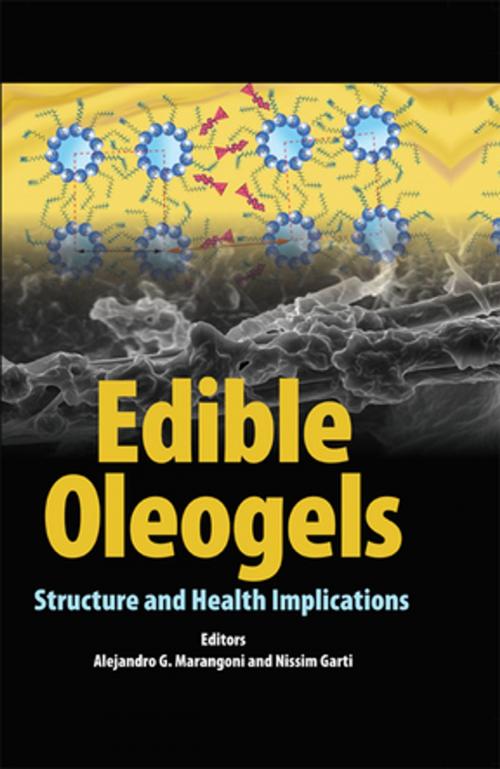Edible Oleogels
Structure and Health Implications
Nonfiction, Science & Nature, Technology, Food Industry & Science| Author: | ISBN: | 9781630670092 | |
| Publisher: | Elsevier Science | Publication: | August 24, 2015 |
| Imprint: | Academic Press and AOCS Press | Language: | English |
| Author: | |
| ISBN: | 9781630670092 |
| Publisher: | Elsevier Science |
| Publication: | August 24, 2015 |
| Imprint: | Academic Press and AOCS Press |
| Language: | English |
In an effort to provide alternatives to trans and saturated fats, scientists have been busy modifying the physical properties of oils to resemble those of fats. In this fashion, many food products requiring a specific texture and rheology can be made with these novel oil-based materials without causing significant changes to final product quality. The major approach to form these materials is to incorporate specific molecules (polymers, amphiphiles, waxes) into the oil components that will alter the physical properties of the oil so that its fluidity will decrease and the rheological properties will be similar to those of fats. These new oilbased materials are referred to as oil gels, or “oleogels,“ and this emerging technology is the focus of many scientific investigations geared toward helping decrease the incidence of obesity and cardiovascular disease.
- Presents a novel strategy to eliminate trans fats from our diets and avoid excessive amounts of saturated fat by structuring oil to make it behave like crystalline fat.
- Reviews recent advances in the structuring of edible oils to form new mesoscale and nanoscale structures, including nanofibers, mesophases, and functionalized crystals and crystalline particles.
- Identifies evidence on how to develop trans fat free, low saturate functional shortenings for the food industry that could make a major impact on the health characteristics of the foods we consume.
In an effort to provide alternatives to trans and saturated fats, scientists have been busy modifying the physical properties of oils to resemble those of fats. In this fashion, many food products requiring a specific texture and rheology can be made with these novel oil-based materials without causing significant changes to final product quality. The major approach to form these materials is to incorporate specific molecules (polymers, amphiphiles, waxes) into the oil components that will alter the physical properties of the oil so that its fluidity will decrease and the rheological properties will be similar to those of fats. These new oilbased materials are referred to as oil gels, or “oleogels,“ and this emerging technology is the focus of many scientific investigations geared toward helping decrease the incidence of obesity and cardiovascular disease.
- Presents a novel strategy to eliminate trans fats from our diets and avoid excessive amounts of saturated fat by structuring oil to make it behave like crystalline fat.
- Reviews recent advances in the structuring of edible oils to form new mesoscale and nanoscale structures, including nanofibers, mesophases, and functionalized crystals and crystalline particles.
- Identifies evidence on how to develop trans fat free, low saturate functional shortenings for the food industry that could make a major impact on the health characteristics of the foods we consume.















